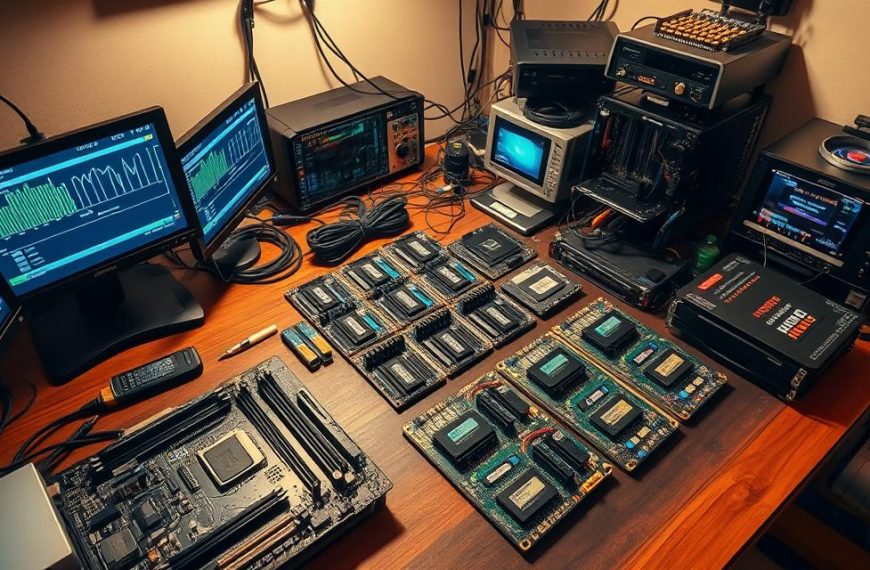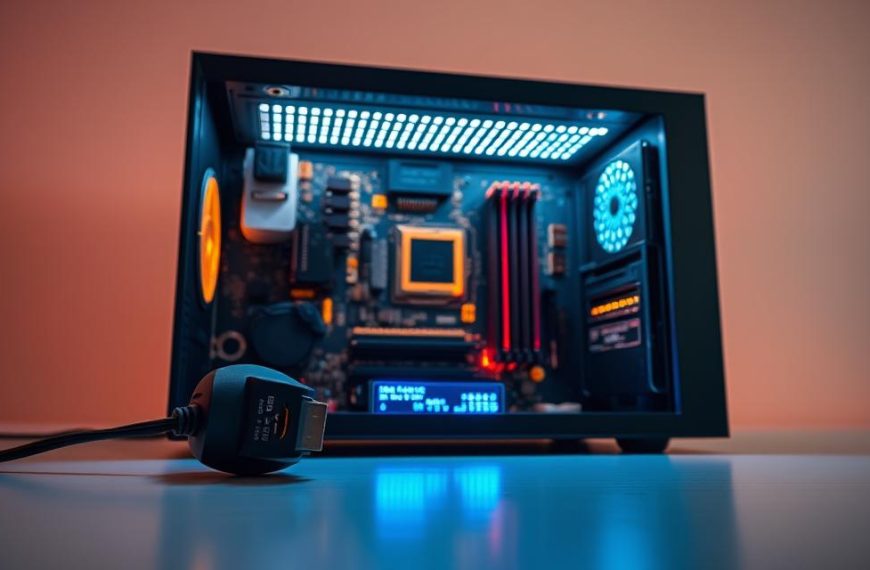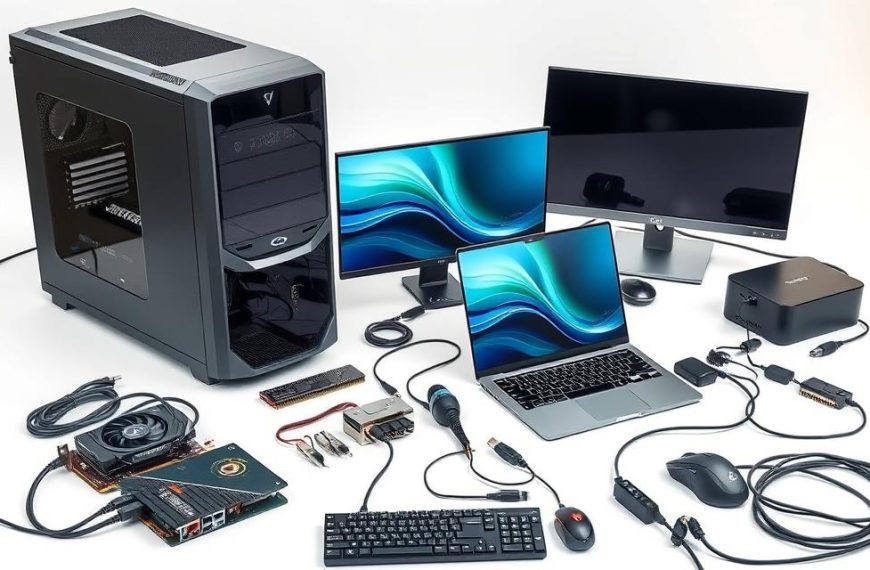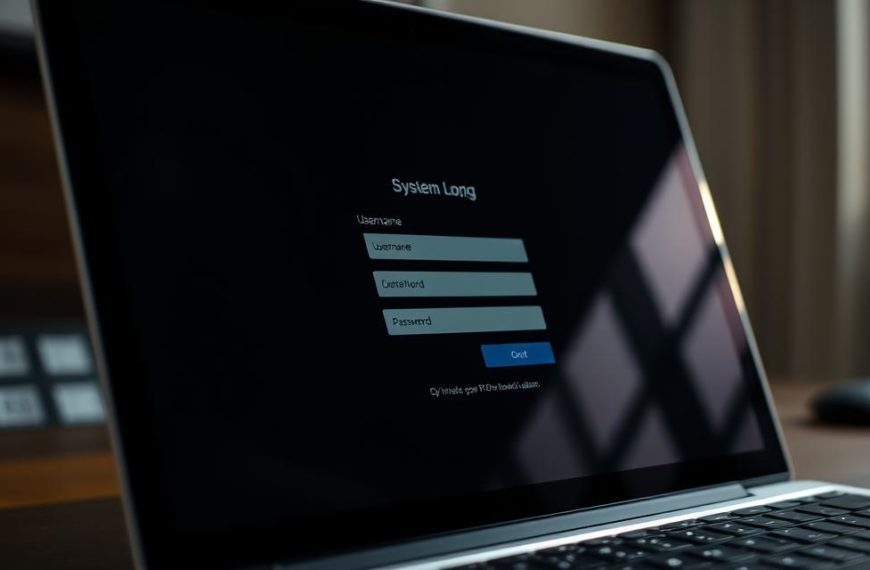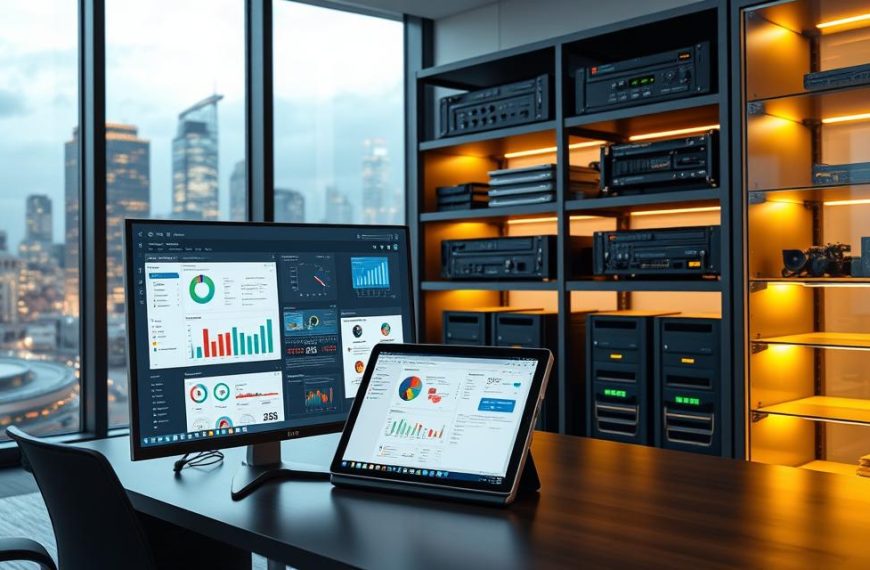Understanding your system’s components is essential for troubleshooting, upgrades, and optimizing performance. Whether you’re using Windows or macOS, accessing system information can be straightforward with the right tools.
Built-in utilities like DxDiag for Windows and macOS System Information provide quick access to critical details. These tools help identify your processor, RAM, storage, and other hardware specifics. For advanced users, third-party solutions like Speccy and HWiNFO offer deeper insights.
Knowing your computer specs is also vital for compatibility when upgrading or installing new software. For example, tools like the Crucial System Scanner can simplify this process by providing detailed reports on your current setup and compatible upgrades.
Regularly checking your system ensures it runs smoothly and helps avoid potential issues. Stay informed about your device’s capabilities to make the most of its performance.
Why Knowing Your Computer’s Hardware Information is Important
Recognizing your system’s capabilities can prevent potential issues. Whether you’re troubleshooting or planning upgrades, understanding your device’s specs is essential. It ensures compatibility with software and enhances overall performance.
For instance, knowing your hardware details helps avoid software incompatibility. Applications often require specific CPU or GPU capabilities. Without this knowledge, you might face crashes or sluggish operation.
Another critical aspect is identifying RAM limitations. Insufficient memory can cause applications to freeze or fail. Monitoring component temperatures also helps diagnose thermal throttling, which can slow down your device.
“Understanding your system’s makeup is the first step toward optimizing its potential.”
Storage configurations play a significant role too. Whether you’re using an HDD or SSD, optimizing storage ensures faster data access. Additionally, verifying your operating system version compatibility with hardware prevents unnecessary conflicts.
- Resolve driver conflicts by identifying specific components.
- Prepare for OS upgrades by checking minimum system requirements.
- Analyze resource allocation through detailed hardware metrics.
- Create hardware inventories for insurance or resale purposes.
- Engage in informed discussions with technical support teams.
Regularly checking your computer’s system information ensures it runs smoothly. It also helps you make informed decisions about upgrades or replacements. Stay proactive to maximize your device’s lifespan and efficiency.
Key Hardware Specifications to Look For
Your system’s performance hinges on its core components. Identifying these specifications ensures smooth operation and compatibility with software. Below, we break down the essential elements to monitor.
Processor (CPU)
The processor is the brain of your device, handling all computational tasks. Modern CPUs, like Intel’s i7-6500U or AMD’s Ryzen series, vary in clock speeds and core counts. Higher GHz and more cores improve multitasking and productivity. Cache memory also plays a role in speeding up data access.
Memory (RAM)
RAM affects multitasking and application performance. Dual-channel configurations and DDR4/DDR5 compatibility enhance speed. For example, 16GB of DDR4 RAM is ideal for gaming and content creation. Balancing capacity and speed ensures optimal efficiency.
Storage (HDD/SSD)
Storage types impact speed and reliability. NVMe SSDs outperform traditional HDDs with faster read/write speeds. Endurance ratings, like TBW (Terabytes Written), indicate an SSD’s lifespan. Below is a comparison of HDD and SSD performance:
| Storage Type | Speed | Endurance |
|---|---|---|
| HDD | Up to 150 MB/s | N/A |
| SSD | Up to 3500 MB/s | 600 TBW |
Graphics Card (GPU)
The graphics card handles visual rendering, crucial for gaming and content creation. NVIDIA’s GTX and RTX series or AMD’s Radeon RX models vary in VRAM and performance tiers. For 4K/8K content, a GPU with at least 8GB VRAM is recommended.
Understanding these components helps you make informed decisions about upgrades or troubleshooting. Regularly reviewing your system summary ensures your device operates at peak efficiency.
How to Get Computer Hardware Information on Windows
Windows offers reliable utilities to uncover system specifics effortlessly. Built-in tools like DxDiag and System Information provide quick access to critical details. These methods are ideal for troubleshooting, upgrades, or simply understanding your device’s capabilities.
Using DxDiag
The DirectX Diagnostic Tool, or DxDiag, is a powerful utility for diagnosing audio and video issues. To access it, type “dxdiag” in the Start menu search bar and press Enter. The tool generates a comprehensive report, including display adapter and sound device details.
Save the report for technical support or driver updates. DxDiag also highlights DirectX versions and identifies potential conflicts. This makes it a go-to tool for gamers and multimedia professionals.
Using System Information
For a broader overview, the System Information tool is invaluable. Navigate to the System Summary to view OS build numbers, processor types, and installed memory. The component tree provides deeper insights, such as USB controller versions and network adapter configurations.
Export the data to a .txt file for documentation or troubleshooting. Advanced users can leverage PowerShell’s “Get-ComputerInfo” command for additional metrics. This tool is perfect for creating a detailed inventory of your system’s makeup.
| Tool | Purpose | Key Features |
|---|---|---|
| DxDiag | Audio/Video Diagnostics | Display adapter details, DirectX version |
| System Information | Comprehensive Hardware Data | System Summary, component tree, export options |
How to Get Computer Hardware Information on macOS
macOS provides intuitive tools for accessing system details. Whether you need a quick overview or in-depth analysis, Apple’s built-in utilities make it easy to view your device’s components.
Using “About This Mac”
The “About This Mac” menu offers a snapshot of your system’s key specifications. Click the Apple logo in the top-left corner and select “About This Mac” to access this feature. Here, you’ll find the macOS version, build number, and basic hardware overview.
The Storage tab provides a visual breakdown of disk space usage. This helps manage files and identify available capacity. For quick reference, the Overview tab displays processor type, memory size, and graphics details.
Using System Information
For a more comprehensive analysis, the System Information tool is invaluable. Access it by clicking “System Report” in the “About This Mac” window. This utility provides detailed details on every component, from PCIe lanes to USB devices.
Navigate the sidebar to explore specific categories. For example, the Power section reveals battery health metrics, while the Network section displays Wi-Fi standards and MAC addresses. Exporting reports as .spx files simplifies sharing with Apple support.
| Feature | Details |
|---|---|
| macOS Version | Displayed in “About This Mac” |
| Storage Breakdown | Visualized in the Storage tab |
| PCIe Lane Info | Found in System Information |
| Battery Health | Analyzed in the Power section |
| Network Details | Available in the Network section |
Regularly reviewing your system information ensures optimal performance and compatibility. Whether you’re managing storage or troubleshooting peripherals, these tools provide the insights you need.
Third-Party Tools for Checking Hardware Information
Third-party tools provide advanced insights into your device’s specifications, offering features beyond built-in utilities. These solutions are ideal for users seeking detailed reports or specialized monitoring capabilities. Below, we explore three popular options: Speccy, HWiNFO, and Belarc Advisor.
Speccy
Speccy, developed by Piriform, is a lightweight yet powerful tool for monitoring system health. Its summary dashboard displays essential details like CPU temperature, RAM usage, and storage capacity. This makes it a favorite for users who need quick access to critical data.
One standout feature is its web sharing function. This allows users to generate and share reports for collaborative troubleshooting. Whether you’re diagnosing issues or planning upgrades, Speccy simplifies the process with its intuitive interface.
HWiNFO
HWiNFO is a comprehensive tool designed for advanced users. It offers real-time sensor tracking, making it ideal for overclockers and enthusiasts. The customizable alert system notifies users when thermal thresholds are exceeded, ensuring optimal performance.
Benchmarking capabilities in the Pro version provide deeper insights into components like the CPU and GPU. HWiNFO also includes detailed details about the motherboard, such as chipset and BIOS version. This level of precision is unmatched in the industry.
Belarc Advisor
Belarc Advisor excels in software license inventory management and security patch reporting. It’s particularly useful in enterprise environments, where tracking software licenses and updates is critical. The tool generates detailed reports in formats like HTML, CSV, and TXT.
Its ability to monitor security updates ensures your system remains protected. Belarc Advisor also provides insights into installed software and hardware configurations, making it a versatile choice for IT professionals.
How to Use Hardware Information for Troubleshooting and Upgrades
Leveraging system details can transform how you approach device maintenance and enhancements. Whether diagnosing performance issues or planning upgrades, understanding your components ensures smoother operation and better decision-making.
Diagnosing Performance Issues
Identifying bottlenecks is crucial for resolving slowdowns. Start by monitoring CPU utilization to ensure it matches application requirements. High usage may indicate the need for a processor upgrade or software optimization.
RAM limitations can also hinder performance. Use usage graphs to determine if additional memory is necessary. For gaming or content creation, insufficient RAM often leads to crashes or lag.
GPU bottlenecks are common in graphics-intensive tasks. Frame time analysis helps pinpoint issues with your graphics card. Regularly updating drivers can also improve performance and stability.
Storage health is another critical factor. Tools like SMART attribute monitoring provide insights into SSD or HDD conditions. Early detection of wear can prevent data loss and ensure reliable operation.
Planning Hardware Upgrades
Upgrading your system requires careful planning. Verify motherboard compatibility before purchasing a new CPU. Mismatched sockets or chipsets can render upgrades ineffective.
Power supply requirements must also be calculated. New components like GPUs or CPUs often demand higher wattage. Ensure your PSU can handle the load to avoid system instability.
For seamless upgrades, use tools like PCpartpicker.com to check compatibility. This platform simplifies the process by identifying potential conflicts between parts.
Expansion cards, such as additional GPUs or SSDs, require available PCIe slots. Analyze your motherboard’s layout to confirm space and bandwidth for new additions.
When mixing memory kits, compare RAM timings to avoid performance discrepancies. Creating an upgrade priority list based on impact ensures the most significant improvements first.
| Component | Key Considerations |
|---|---|
| CPU | Socket compatibility, thermal design power (TDP) |
| RAM | DDR version, capacity, and timings |
| Graphics Card | PCIe slot availability, power requirements |
| Storage | Interface type (SATA/NVMe), capacity |
| Power Supply | Wattage, efficiency rating |
By leveraging system details, you can diagnose issues effectively and plan upgrades with confidence. Stay proactive to maximize your device’s potential.
Conclusion
Understanding your device’s components ensures optimal performance and longevity. Built-in tools like Windows’ DxDiag and macOS’ System Information offer quick access to critical details. For deeper insights, third-party solutions like Speccy and HWiNFO provide advanced monitoring capabilities.
Regularly reviewing your system information helps identify potential issues early. It also aids in making informed upgrade decisions. Benchmarking before and after changes ensures measurable improvements.
Documenting your device’s specs simplifies troubleshooting and future upgrades. Automated driver updates and data backups are essential for maintaining stability. Manufacturer support resources can further assist with compatibility and performance optimization.
Stay proactive by leveraging emerging technologies for hardware monitoring. Keeping your system in peak condition enhances productivity and extends its lifespan.






